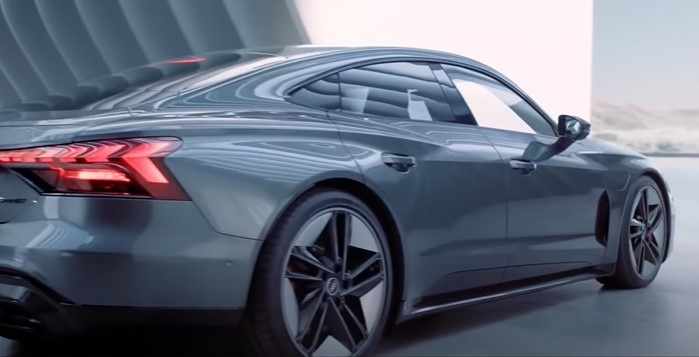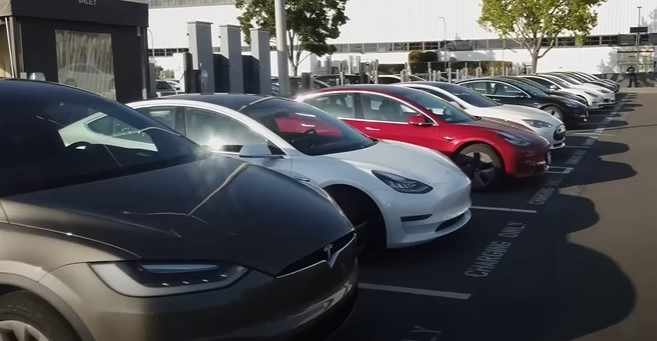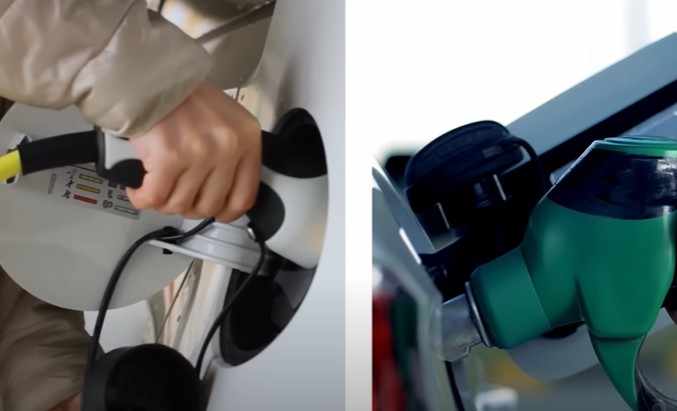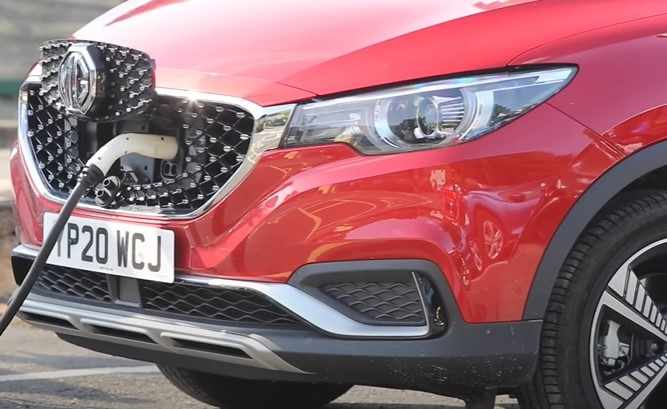If you’re among those who remain skeptical about electric vehicles (EVs), you’re not alone. Concerns about range limitations, high costs, and a lack of charging infrastructure have kept many potential buyers at bay. However, it’s important to dispel some common misconceptions and understand the true environmental benefits of EVs.

Misconceptions about Electric Vehicles

One of the most persistent misconceptions surrounding electric vehicles is the belief that they are not as environmentally friendly as they are portrayed to be. Some even argue that they produce more emissions than traditional gasoline-powered cars. However, these assertions lack substantiation. In reality, electric vehicles are a potent solution for combatting air pollution and reducing carbon emissions.
Key Takeaways
- Electric cars frequently face misconceptions, but numerous doubts are based on unfounded myths.
- The electric vehicle serves as a potent remedy for combating air pollution and curbing carbon emissions.
- Progress in battery recycling and the adoption of sustainable energy sources are enhancing the availability and eco-friendliness of electric cars.
Reasons for the Growing Demand for Electric Vehicles

Government Regulations Driving Electric Vehicle Adoption
Wondering what’s driving the growing popularity of electric vehicles? Several factors contribute to this trend. First and foremost, increasing consumer demand for EVs has been a game-changer. Tesla, a prominent electric vehicle manufacturer, has taken the lead in global EV sales, highlighting the strong consumer interest. This demand is also partly driven by government regulations aimed at phasing out internal combustion engines and decarbonizing economies.
Economic Benefits of Electric Vehicles
Economic considerations also play a vital role in the surge of EV interest. While initial purchase costs may be higher, electric vehicles are generally cheaper to operate than their gasoline or diesel counterparts. Additionally, electric cars are seen as an eco-friendly alternative to traditional vehicles powered by fossil fuels like gasoline, diesel, or coal, known for their harmful emissions contributing to air pollution.
Environmental Advantages of Electric Cars
Moreover, electric vehicles are widely regarded as having a minimal environmental footprint, a key aspect that enhances their attractiveness. They are recognized for their superior eco-friendliness compared to conventional automobiles dependent on fossil fuels like diesel, gasoline, natural gas, and coal. Traditional cars equipped with internal combustion engines are notorious for emitting detrimental pollutants that contribute to air pollution. In contrast, electric vehicles emit significantly fewer pollutants, positioning them as a cleaner and more sustainable alternative.
In summary, the increasing demand for electric vehicles can be attributed to a combination of factors, including government policies, economic benefits, and environmental concerns.
The Electric Car is Excellent at Tackling Air Pollution

As previously mentioned, one of the most prominent reasons driving the preference for electric vehicles among regulators and users is their remarkable capacity to combat air pollution.
Conventional Vehicles’ Contribution to Carbon Emissions
Conventional internal combustion engine vehicles bear a significant responsibility for carbon emissions, accounting for approximately 30% of the European Union’s carbon emissions and 28% of those in the United States. This substantial contribution is a major catalyst for climate change and its adverse repercussions on the environment.
Health Concerns and Urban Traffic Pollution
Furthermore, the well-being of individuals residing in urban centers plagued by heavy traffic pollution stemming from traditional combustion engine cars has raised significant concerns. An estimated 3.5 million premature deaths annually can be attributed to the presence of ambient air pollution.
Electric Vehicles’ Zero Emissions and Health Benefits
In stark contrast, electric vehicles prove to be an unequivocal success when it comes to addressing localized air pollution. They produce absolutely zero emissions of fine particulate matter and nitrogen oxide, both of which have known adverse effects on human health.
Impact of Non-Renewable Electricity Sources on Electric Vehicles
Even in cases where electricity production relies on non-renewable sources, the pollution generated is largely dispersed beyond city limits, resulting in minimal damage. This is primarily because these pollutants have relatively short atmospheric lifespans.
The scenario becomes more intricate concerning carbon pollution. The cleaner the power plant generating electricity, the more environmentally friendly the electric vehicle. However, it is imperative to refrain from direct comparisons of power plant emissions for electric vehicles with the direct emissions of conventional combustion engine vehicles. In the case of electric vehicles, direct emissions are non-existent.
Evaluating Direct and Indirect Emissions in Electric and Conventional Vehicles
The crux of the matter lies in indirect emissions, which also affect combustion-based vehicles but at a much higher rate. Emissions stemming from a tank of petrol, for instance, encompass not only the combustion of the fuel but also the emissions associated with extracting and transporting the petroleum to the vehicle.
Secondary Environmental Effects of Petrol and Diesel Production
Additionally, the secondary consequences of petrol and diesel production should not be overlooked. The use of oil to fuel combustion engines has a substantial environmental footprint in and of itself.
Electric vehicles undeniably present a formidable solution to the pervasive issue of air pollution and its deleterious impact on human health. Their emission-free operation, particularly in terms of fine particulate matter and nitrogen oxide, underscores their capacity to enhance public health and environmental quality.
How Green Your Electric Car Depends on Where You Live

Geographic Influence on Electric Car Environmental Impact
The environmental impact of electric cars is strongly influenced by your location. In the worst-case scenario, electric cars emit 22% less CO2 than diesel cars and 28% less than petrol cars, even when considering electricity generated from fossil fuels. This underscores their eco-friendliness compared to traditional counterparts, reducing CO2 emissions significantly. However, in areas heavily reliant on fossil fuels for energy, electric vehicles may not be as green.
For instance, in Poland, where 78% of energy comes from coal and lignite, electric cars may not have the same positive impact as in countries with a mix of energy sources or renewables. Conversely, in renewables-oriented Norway, electric cars come closest to zero emissions.
Regional Variation in Electric Car Eco-Friendliness
It’s important to note that in coal-intensive countries like China, the emissions from electric car manufacturing are nearly double those in cleaner-energy nations like the United Kingdom. So, the electricity source for both driving and manufacturing matters.
Additionally, the availability of charging points and grid capacity also affects the environmental footprint of electric cars. In places like Japan, where the grid struggles to meet electric car demand, reliance on fossil fuels for power during peak charging times can be a concern.
In summary, electric cars are generally greener than traditional gasoline and diesel cars, but their environmental impact depends on various factors, including electricity sources and charging infrastructure availability.
We are moving towards greener and more sustainable energy globally

Transition to Renewable Energy and Electric Car Emissions
The world is witnessing a promising transition towards renewable and eco-friendly energy sources, potentially rendering concerns about operational emissions from electric cars obsolete. Notably, renewable energy has become cost-competitive with fossil fuels, even without considering subsidies. This has spurred countries to revamp their power grids, embracing greater use of renewables.
Municipal Initiatives to Reduce Traffic Congestion and Pollution
Cities are also taking proactive steps to alleviate traffic congestion and curb ambient pollution. Oslo, for instance, has implemented diverse measures that have made substantial strides in reducing pollution levels. Moreover, electric cars, on average, are 39% cleaner compared to their internal combustion engine counterparts. This transition to sustainable energy aligns harmoniously with the goals of the Paris Agreement, aiming to cap global warming at 1.5 degrees Celsius and establish a carbon-neutral world. With the promising potential of solar panels and other renewable energy sources, the future appears optimistic for a more sustainable and climate-friendly world.
Electric car’s big challenge: making batteries more sustainable

Electric cars, while more efficient and environmentally friendly to operate than their combustion-engine counterparts, currently face a less eco-friendly production process. Nonetheless, operating an electric vehicle for just 1-2 years can compensate for this drawback, as indicated by the Well to Wheel analysis method. This method considers the CO2 emissions associated with extracting, transporting, and processing crude oil for conventional cars, along with the emissions from producing gasoline and lubricants, in addition to the CO2 emissions linked to manufacturing an electric car and generating the electricity to power it.
The Sustainable Challenge: Making Electric Car Batteries Greener
A prominent challenge in enhancing the sustainability of electric cars revolves around making their batteries more eco-friendly. Battery production demands considerable energy and water resources and relies on raw materials like cobalt, nickel, copper, lead, and rare earth elements, which can have adverse environmental consequences during mining and manufacturing.
Key Factors in Advancing Battery Sustainability
To boost battery sustainability, manufacturers must address all phases of the battery’s life cycle, encompassing the production process and end-of-life recycling. Key considerations include the use of environmentally friendly materials, reducing energy and water consumption in manufacturing, and refining recycling methods. Innovative battery technologies, such as solid-state batteries, hold promise in the pursuit of more sustainable batteries.
In summary, the quest for greater battery sustainability is pivotal in achieving overall sustainability for electric cars. Through ongoing innovation and investment, the electric vehicle industry can surmount this challenge and establish a more sustainable transportation system.
Advances in Lithium-Ion Battery Recycling Could Hold the Key
The Rising Demand for Electric Vehicle Battery Recycling
As the demand for electric vehicles (EVs) continues its upward trajectory, the call for efficient and eco-friendly recycling of lithium-ion batteries grows louder. Fortunately, advancements in recycling technologies appear to hold the key to addressing this challenge.
Green Lithium Mining and Eco-Friendly Resource Extraction
One promising advancement centers on the promotion of “green” lithium mining, using geothermal energy and producing no carbon emissions. Similar initiatives are underway for other metals essential in battery production, such as nickel and aluminum. Additionally, the transformation of existing lithium-ion batteries into solid-state batteries or graphene-based organic batteries displays substantial potential.
Government Initiatives to Address Battery Environmental Impact
Governments are taking proactive measures to confront the environmental repercussions of batteries. For instance, the European Union has put forward a proposal that outlines objectives and obligatory requirements covering the entire lifespan of electric vehicle batteries. The objective is to substantially enhance the environmental friendliness of battery production and attain carbon neutrality, along with high levels of recyclability for a significant portion of raw materials by 2030.
Mandatory Carbon Footprint Disclosure and Raw Material Recycling by 2027
To attain these objectives, all batteries sold in Europe will be mandated to publicly disclose their carbon footprint by 2024. By 2027, it will become obligatory to divulge the extent of recycled raw materials utilized in their production. Furthermore, the sale of any battery or electric car that fails to meet CO2 emission limits will be prohibited by 2027.
Exciting Developments in Sustainable Lithium-Ion Battery Recycling
Furthermore, this measure establishes a framework that encourages the repurposing of EV batteries. These batteries can find a second life as energy storage systems or as components of the electricity grid, thereby reducing waste and extending their utility.
The drive towards more efficient and sustainable recycling of lithium-ion batteries represents an exciting development that could effectively cater to the surging demand for electric vehicles while mitigating their environmental impact. With the continuous evolution of recycling technologies, a future awaits where batteries are recycled with efficiency and sustainability, thereby reducing their environmental footprint.
Progress is Just Around the Corner

Innovative Breakthroughs in Electric Vehicle Battery Recycling
Exciting advancements are unfolding in the realm of electric vehicle batteries, as pioneering startups like Redwood Materials and Li-Cycle explore groundbreaking techniques to maximize material recovery from batteries. Redwood Materials boasts a process capable of reclaiming between 95 and 98 percent of a battery’s nickel, cobalt, copper, aluminum, graphite, and over 80 percent of its lithium. Simultaneously, Li-Cycle has developed an advanced leaching process devoid of wastewater generation.
The Environmental Impact: Reducing Demand for Environmentally Harmful Materials
These strides in battery recycling hold the potential to significantly reduce the demand for environmentally harmful materials in the production of new electric vehicles. If battery manufacturers prioritize recycling in their designs, a more sustainable future for electric vehicles becomes achievable.
The Ongoing Quest for 100% Sustainable Energy Grids
Nonetheless, to fully unlock the environmental potential of electric vehicles and achieve 100% zero emissions throughout their lifecycle, there remains a need for the adoption of 100% sustainable energy grids. The transition to renewable energy has already commenced, and it is crucial to sustain this momentum to ensure the genuine sustainability of electric vehicles.
Transitioning to Renewable Energy Sources for Electric Vehicle Sustainability
While challenges persist, including the high cost of electric vehicles, the shift towards renewable energy and sustainable battery recycling methods represents a positive step forward. With ongoing advancements and innovation, electric vehicles will become more accessible and environmentally friendly, emerging as a viable option for a broader audience.
In conclusion, through the embrace of sustainable energy grids and robust recycling practices, the environmental footprint of electric vehicles can be diminished, paving the way for a more sustainable future. The outlook for electric vehicles is promising, with progress on the horizon.
Conclusion
In summary, the electric vehicle industry is advancing towards a more sustainable future, driven by growing demand, eco-friendliness, and innovative solutions. While challenges remain, the shift towards renewable energy and efficient recycling methods is paving the way for a greener transportation landscape. The future looks promising for electric vehicles as a cleaner and more environmentally friendly choice.
Frequently Asked Questions
What are the types of electric cars available?
There are three types of electric cars available: Battery Electric Vehicles (BEVs), Plug-in Hybrid Electric Vehicles (PHEVs), and Hybrid Electric Vehicles (HEVs). BEVs run solely on electricity and need to be charged, PHEVs have both an electric motor and a gasoline engine, and HEVs primarily run on gasoline but have an electric motor to assist.
How do electric cars contribute to sustainable development?
Electric cars contribute to sustainable development by reducing greenhouse gas emissions and improving air quality. They use renewable energy sources and produce less pollution than traditional gasoline-powered cars. Additionally, electric cars can help reduce dependence on foreign oil and create new jobs in the clean energy sector.
What are the pros and cons of using electric cars?
Pros of using electric cars include lower fuel costs, reduced emissions, and quiet operation. Cons include limited driving range, long charging times, and higher upfront costs. However, as technology improves, these cons are becoming less of an issue.
Are electric cars really better for the environment?
Yes, electric cars are better for the environment than traditional gasoline-powered cars. They produce fewer emissions and use renewable energy sources. However, the manufacturing process for electric car batteries does produce emissions, so it is important to recycle batteries properly.
How can we recycle electric car batteries?
Electric car batteries can be recycled by extracting the valuable metals and materials used in their production. These materials can then be used to create new batteries or other products. Proper recycling of electric car batteries is important to reduce environmental impact and conserve resources.
What is the biggest problem with electric cars?
The biggest problem with electric cars is the limited driving range and long charging times. This can make long-distance travel difficult and inconvenient. However, as technology improves, electric cars are becoming more practical for everyday use.




